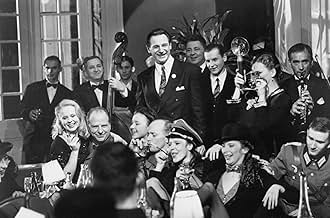Starring:
- Liam Neeson as Oskar Schindler
- Ben Kingsley as Itzhak Stern
- Ralph Fiennes as Amon Goeth
- Caroline Goodall as Emily Schindler
- Embeth Davidtz as Helen Hirsch
Awards:
Academy Awards:
- Best Film
- Best Director (Steven Spielberg)
- Best Original Screenplay
- Best Cinematography
- Best Art Direction
- Best Film Editing
- Best Original Score (John Williams)
Golden Globe Awards:
- Best Film – Drama
- Best Director – Film

Plot Summary:
Schindler’s List is based on the true story of Oskar Schindler, a German businessman who saved more than 1,100 Jews during the Holocaust. The film begins in 1939 with Schindler’s arrival in Krakow, Nazi-occupied Poland. Initially, Schindler is portrayed as a member of the Nazi Party, looking to profit from the war. He uses his charm and connections to set up factories producing cookware and military supplies, employing Jews as cheap labor.
Schindler’s Collaboration with Itzhak Stern:
Schindler collaborated with Itzhak Stern, a Jewish accountant who helped him find Jewish workers. Stern plays a key role in keeping Schindler’s business afloat, secretly ensuring that many Jews are registered as “essential” workers, saving them from deportation to concentration camps.
Atrocities of the Holocaust:
As the Holocaust intensifies, Krakow’s Jews are forced into the brutal Krakow Ghetto and then sent to the Plaszow labor camp, run by the sadistic Nazi officer Amon Goeth. Goeth is portrayed as a ruthless man who orders mass executions and shows no sympathy for the suffering around him.
Schindler’s Transformation:
Over time, Schindler’s motivations change from personal gain to a desperate desire to save as many Jewish lives as possible. He bribes Nazi officials and risks his life to protect the workers. In an act of incredible courage, Schindler creates a list of 1,100 Jewish workers known as “Schindler’s List”, saving them from the extermination camps.
End of the War and Schindler’s Guilt:
Towards the end of the war, Schindler runs out of money and can no longer keep the factory going, but his efforts are not in vain. The workers he saved are liberated. Despite saving so many lives, Schindler is plagued by deep guilt, feeling he could have done more.

Impact:
Schindler’s List is considered one of the greatest films of all time. With exceptional acting and masterful direction, it provides a powerful and harrowing portrayal of the Holocaust. The use of black-and-white cinematography with selective splashes of color (like the famous “Girl in the Red Coat”) accentuates the horror and emotional depth of the story.
This film remains an essential work for understanding the impact of the Holocaust and the enormous difference one person can make in the face of overwhelming evil.

